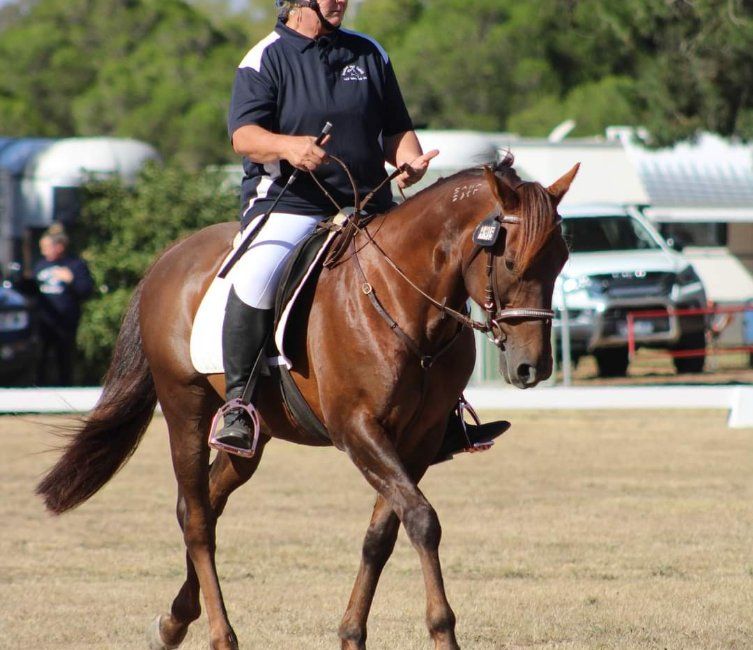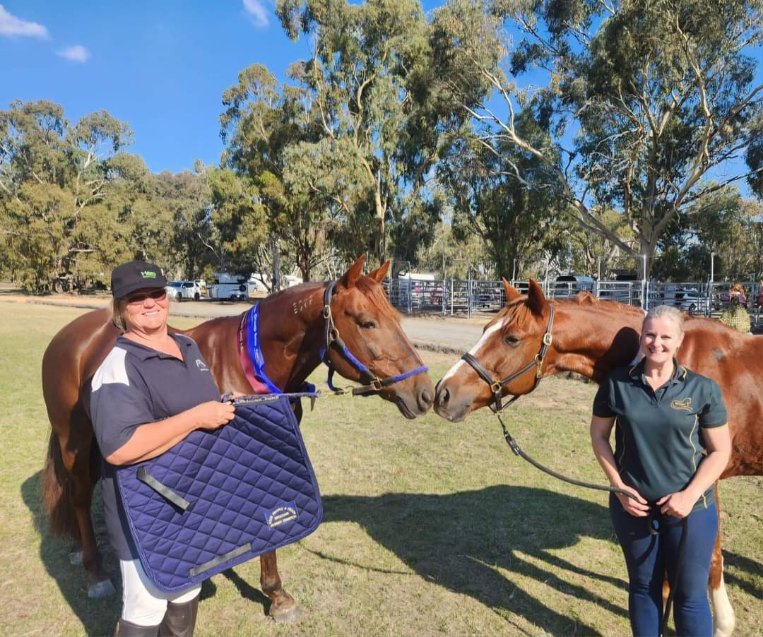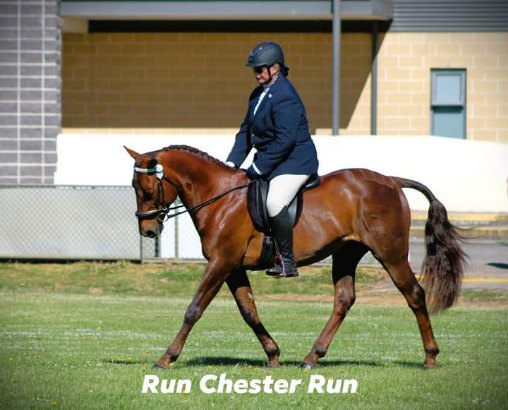
Having learned to ride on a standardbred as a child, Wendy Mosley’s riding career has come full circle, as she spends her weekends attending events with her retired harness racehorses.
”I’ve had a lot to do with standardbreds over the years, as I lived for twenty-five years in Terang, which is a big harness racing area”, Wendy recalls.
“I’d take standies directly from their racing connections, get them going under saddle and take them out trail riding with my kids.
“I’d often rehome the standardbreds I worked with to novice riders, including
non-horsey husbands or to people regaining their confidence after a long break from the saddle. I know lots of people who have learned to ride on a standardbred, as they’re so resilient, forgiving and sensible.
“As a single mum with four kids, retraining standardbreds was more than just a hobby in our family. I would put horses through foundation training and rehome them to lovely people. This was great for the horses and also helped to fund things like purchasing a float and covering the costs to put my daughter right through to the highest level of pony club on her part-bred standardbred”.
Wendy’s HRCAV journey commenced several decades ago, as a founding member of the Terang Adult Riding Club. Training many horses up through to Level 2 over the years, Wendy has been an active member of the HRCAV community and familiar face at Western District competitions (currently riding as a member of the Beaufort and District Adult Riding Club).
“I love standardbreds! They’re easy to get going because seventy-five percent of training is done during their harness racing careers”, Wendy explains.
“You don’t need to namby them, because they’ve done so much in harness that you know they’ll deal with pressure. They’ve been floated around, managed in the dark, are used to standing tied up for hours and generally have such lovely temperaments and good work ethic.

“By the time a standardbred has retired from racing, it’s really just about getting them used to carrying a rider and fine-tuning the basics. I’ve always felt really safe on my standies, because they’ve got such willing natures.
“I will often take very green standardbreds to HRCAV events, despite them having no idea what they’re meant to be doing. The judges have been so encouraging and supportive, as they know I’m there to give the horse some exposure.
“This has been the case with my newest standy Charlie (who raced as Dance For Me), who went to his first competition just a couple of weeks after being started under saddle. We did the Walk/Trot class and rode a HC Level 5 test (as per the requirements of a mount campaigned under a Level 2 rider).
“Charlie was still figuring out how to coordinate his legs and he’d barely been ridden by the time I took him out. I didn’t mind how we looked or scored, as it was all about the training experience for him.
“I hope to take Charlie to the upcoming Maryborough HT, which will be his introduction to show jumping and cross country. It will be a big event full of ‘firsts’ for him and I’m grateful that the hosting club is offering a Level 6 Open section, which will help us to build confidence.
“Charlie is my project horse and focus for winter, whilst my other standy, Chester, is enjoying a spell. The availability and diversity of HRCAV events will provide plenty of opportunities to tick lots of experiences off the list, before finding Charlie his forever home”.
Working with Charlie over winter whilst Chester is spelling (aka ‘getting fatter than his round bale’), has been a blessing for Wendy.
“I got Chester (who raced as Run Chester Run) in March last year and he’s been training steadily ever since”, Wendy explains.
“He’d been green broken to saddle as a youngster, but then stood around being a ‘paddock brat’ for a few years before I picked him up.

“Chester’s a very smart, but stubborn fella. We initially spent some time brushing up on his manners and introducing some of the foundation skills he hadn’t been taught.
“I’ve set little goals along the way with Chester. First it was to get his balance, bend and trot going under saddle. Then we introduced canter, with his left leg taking a little longer. He can now complete full laps of canter in both directions and he has completed a few Level 4 dressage tests.
“There’s a trotting track at the Portland ARC grounds and Chester became very stressed the first time we competed there, which I figured was fair enough! The shaky first experience only made me prouder when Chester went back to the same venue recently for the Portland CCC Series, where he behaved brilliantly and was much more relaxed. I feel Chester’s really earned some time out in the paddock after that effort, on top of a big few months developing his dressage skills.
“I really love Chester and he’s certainly turned a few heads, with his unique colour and stocky build. I’ve received compliments from judges and Chester has made fans out of people who previously hadn’t rated standardbreds too highly.
“I think it’s great to see breed perceptions evolving over time. These days there’s an entire standardbred community of its own. The breed is becoming quite big, particularly in showing, and in HRCAV you have plenty of opportunities to ride a walk/trot test, or compete HC and just treat it like a training day.
“Like most standies, Chester is low-maintenance, resilient, versatile, you don’t have to pump him full of feed and he has great feet.
“Chester is the perfect horse for me at this stage in my riding career. He’s just enough fun to keep things interesting, but I always feel safe on him, which is the most important thing as I head into my sixties.
“I’m really enjoying refining his skills and getting Chester out and about and showing people what standardbreds can do!”

